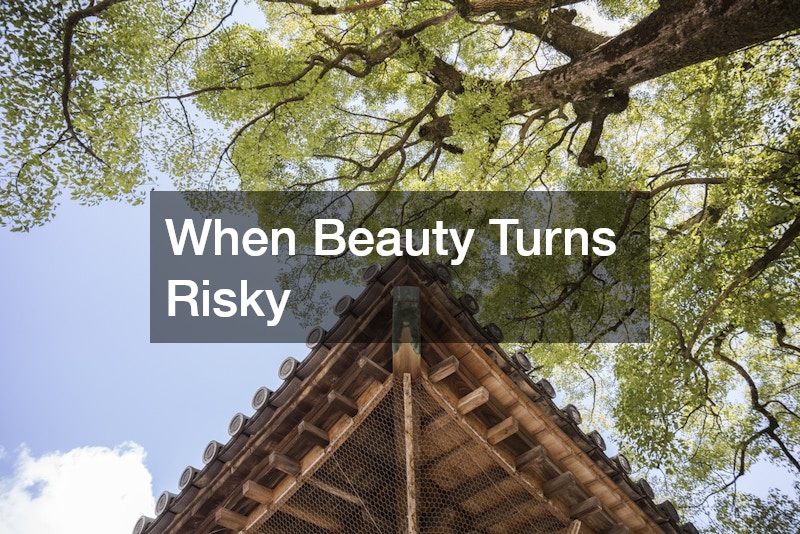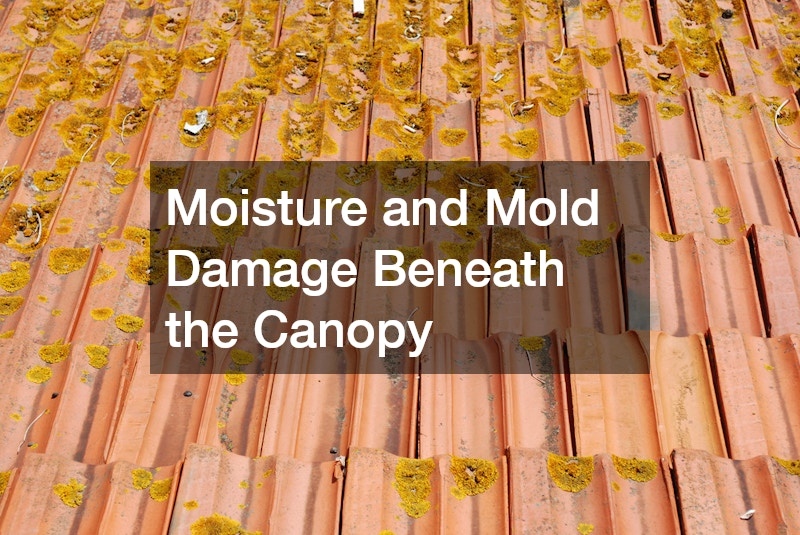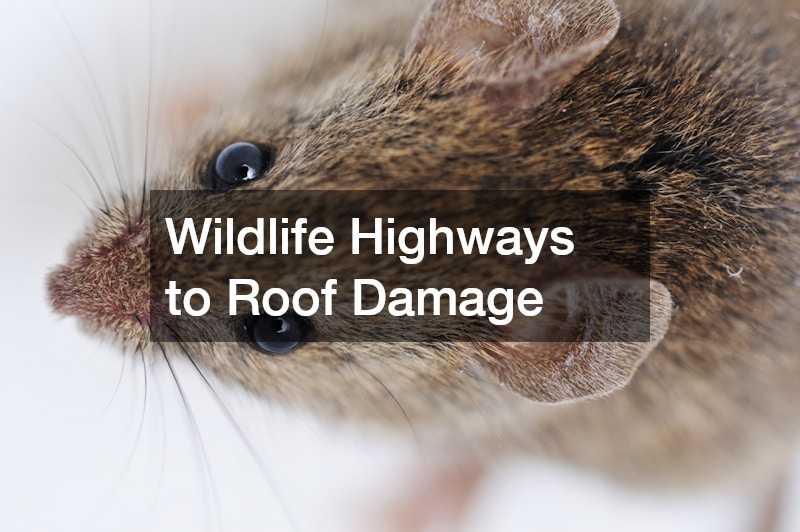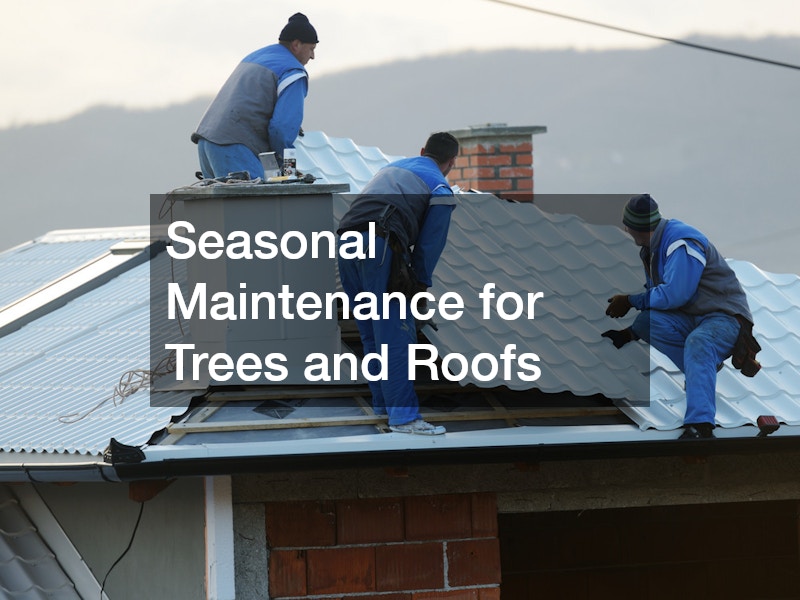Is That Tree Hurting Your Aging Roof More Than You Realize?
As homeowners, we often take great pride in the beauty of our trees and the protection they provide. However, trees can also pose risks to our homes, specifically our aging roofs. Tree branches, debris, moisture, and wildlife can all contribute to roof damage if not properly maintained. In this article, we will explore the various ways in which trees can impact an older roof and discuss the importance of routine tree trimming and maintenance.
When Beauty Turns Risky

Many homeowners turn to local roofing contractors to address issues with their older roof, only to discover that overhanging tree branches are a major culprit. Not only can these branches scratch and damage shingles, but they can also provide easy access for pests and rodents looking to make their way into your attic. It’s essential to address overhanging branches to prevent potential roof damage and costly repairs.
If you notice that your aging roof is constantly littered with leaves and debris from nearby trees, it’s time to consider the impact they may have. Leaves and debris can trap moisture on your roof, leading to mold growth and degradation of your shingles. Regularly cleaning your roof and gutters can help prevent these issues and extend the life of your roof.
Moisture and mold damage can quickly spread beneath the canopy of overhanging trees, compromising the structural integrity of your roof. While local roofers can address visible signs of damage, it’s crucial to also address the root cause. Trimming back branches and ensuring proper ventilation can help reduce moisture build-up and protect your older roof.
The Problem with Overhanging Branches
Many local roofing companies recommend addressing overhanging branches as a preventive measure for an older roof. The weight of overhanging branches can put unnecessary stress on your roof, leading to weakened areas and potential leaks. Regular tree trimming can help maintain a safe distance between trees and your roof, reducing the risk of damage.
Leaves and debris that accumulate on your older roof can create a haven for pests and critters looking for shelter. Roof repair near me often includes cleaning up these debris-laden areas to prevent infestations and protect your roof’s integrity. By keeping your roof clear of debris, you can avoid potential damage and prolong the lifespan of your roof.
Moisture and mold damage can quickly spread beneath the canopy of overhanging trees, compromising the structural integrity of your roof. While local roofers can address visible signs of damage, it’s crucial to also address the root cause. Trimming back branches and ensuring proper ventilation can help reduce moisture build-up and protect your older roof.
Leaves and Debris Cause More Trouble Than You Think
Roof repair near me often includes addressing the impact of leaves and debris on an older roof. Leaves can trap moisture and create a breeding ground for mold and mildew, leading to potential health hazards and damage to your roof. Regularly cleaning your roof and gutters can help prevent these issues and ensure the longevity of your older roof.
Local roofing companies emphasize the importance of keeping your aging roof free from leaves and debris to prevent potential damage. Debris accumulation can create drainage issues, causing water to pool on your roof and seep into your home. By maintaining a clean roof surface, you can avoid costly repairs and ensure the stability of your roof.
Roofing services often recommend routine maintenance to remove leaves and debris from your older roof. Not only can this improve the aesthetic appeal of your home, but it can also protect your roof from water damage and structural issues. By investing in regular cleaning and maintenance, you can extend the lifespan of your roof and avoid costly repairs.
Moisture and Mold Damage Beneath the Canopy

Local roofers understand the risks associated with moisture and mold damage beneath the canopy of overhanging trees. These hidden areas can harbor moisture, mold, and pests that compromise the integrity of your older roof. Regular inspections and maintenance can help identify and address these issues before they escalate.
Aging roofs are particularly susceptible to moisture and mold damage, especially in areas shaded by overhanging trees. Roofing companies recommend proper ventilation and insulation to prevent moisture build-up and mold growth in these vulnerable areas. By addressing the root cause of these issues, you can protect your roof from costly damage and ensure its longevity.
Local roofing contractors often recommend addressing moisture and mold damage beneath the canopy of overhanging trees as part of routine roof maintenance. By removing debris, improving ventilation, and addressing sources of moisture, you can protect your older roof from potential damage and prolong its lifespan.
The Weight of Debris After Storms
After storms, local residential roofers often see an increase in calls related to the weight of debris on older roofs. Heavy debris can put stress on your roof’s structure, leading to weakened areas and potential leaks. It’s important to inspect your roof after a storm and remove any debris to prevent damage and costly repairs.
The weight of debris on an aging roof can compromise its structural integrity and increase the risk of leaks and water damage. Local roofers recommend clearing debris promptly to avoid these issues and protect your home from further damage. By maintaining a clean and debris-free roof, you can ensure the longevity of your roof and avoid costly repairs.
Local roofing contractors often emphasize the importance of clearing debris from your older roof after storms. Neglecting to remove debris can lead to clogged gutters, trapped moisture, and potential roof damage. By staying proactive and addressing debris accumulation promptly, you can safeguard your roof and prevent costly repairs.
Root Systems Can Affect More Than Just the Yard
Roofing companies understand the impact that tree root systems can have on an older roof. As trees grow, their root systems can expand and potentially disrupt the foundation of your home. It’s important to choose trees carefully and monitor their growth to prevent damage to your roof and property.
Local roofers often recommend monitoring the growth of tree root systems near your home to prevent potential damage. Tree roots can damage underground utilities, foundations, and even your older roof if left unchecked. By selecting trees with non-invasive root systems and maintaining them properly, you can protect your home from costly damage.
Root systems of trees near your home can extend far beyond the yard, posing a risk to your aging roof’s foundation. It’s essential to work with local tree removal companies to manage tree roots and prevent damage to your property. By addressing root system growth early on with a roofing company, you can protect your roof from potential issues and ensure its longevity.
Wildlife Highways to Roof Damage

Local tree services often deal with wildlife highways that lead to roof damage on aging homes. Squirrels, raccoons, and birds can use overhanging branches and tree limbs to access your roof and attic, causing damage and creating safety hazards. By trimming back branches and sealing potential entry points, you can prevent wildlife from damaging your roof.
Roofing companies understand the risks associated with wildlife accessing your older roof through overhanging trees. Pests and critters can cause extensive damage to your roof, insulation, and wiring, leading to costly repairs and potential health hazards. Regular inspections and maintenance can help identify and address these issues before they escalate.
Local tree removal services recommend addressing wildlife highways to prevent roof damage and protect your home. By trimming back branches, removing potential nesting sites, and securing vulnerable areas, you can deter wildlife from accessing your aging roof and causing damage. By taking proactive measures, you can safeguard your roof and ensure its longevity.
Tree Sap and Shingle Breakdown
Local tree services understand the impact of tree sap on the shingles of older roofs. Tree sap can be acidic and corrosive, causing shingles to deteriorate and weaken over time. It’s important to clean tree sap off your roof promptly to prevent damage and extend the lifespan of your shingles.
Tree sap can compromise the integrity of your older roof’s shingles, leading to leaks and water damage. Roofing companies recommend regular roof cleaning to remove tree sap and prevent deterioration of your shingles. By keeping your roof free from tree sap, you can protect your roof from potential damage and ensure its longevity.
Local tree removal services often include roof cleaning as part of their maintenance services to remove tree sap and debris. Cleaning your roof regularly can prevent tree sap from corroding your shingles and causing leaks. By investing in routine roof maintenance, you can protect your aging roof and avoid costly repairs.
The Importance of Routine Tree Trimming
Choosing to work with local tree removal companies for routine tree trimming can help protect your older roof from potential damage. Trimming back overhanging branches and removing dead limbs can prevent debris buildup, pests, and wildlife access to your roof. By investing in regular tree trimming, you can maintain the health of your trees and the integrity of your roof.
Regular tree trimming can help prevent overhanging branches and limbs from damaging your aging roof. By working with local tree services to maintain proper tree care, you can reduce the risk of tree-related roof damage. Investing in routine tree trimming can extend the life of your roof and ensure the safety and beauty of your property.
Local tree removal companies emphasize the importance of routine tree trimming to protect your older roof from potential hazards. Trimming back branches, removing dead limbs, and maintaining tree health can prevent roof damage and prolong the lifespan of your roof. By prioritizing tree care, you can prevent costly repairs and maintain the value of your home.
Choosing the Right Trees to Plant Near Your Home
When it comes to planting trees near your home, it’s essential to work with local tree services to choose the right species. Some trees have invasive root systems, fast-growing branches, or produce excessive debris that can damage your aging roof. By selecting trees that are well-suited to your climate and property, you can minimize the risk of roof damage and enjoy the benefits of tree shade.
Tree removal companies often recommend selecting trees that are well-suited to your property and climate to prevent potential roof damage. By choosing trees with non-invasive root systems, slow growth rates, and minimal debris production, you can protect your older roof and property. Working with local tree services can help you make informed decisions and ensure the health and longevity of your trees.
Local tree removal services emphasize the importance of choosing the right trees to plant near your home to avoid potential roof damage. Selecting trees that are compatible with your property can help prevent issues with overhanging branches, root systems, and debris. By working with local tree services to plan your landscaping, you can protect your older roof and enhance the beauty of your property.
Seasonal Maintenance for Trees and Roofs

As the seasons change, it’s important to invest in seasonal maintenance for both your trees and aging roof. Local tree services can help with tree pruning, trimming, and health assessments to prevent issues that may impact your roof. Regular roof inspections and maintenance can also identify potential tree-related damage and address it before it becomes a costly repair.
In spring, focus on clearing any debris left from winter storms, checking for broken branches, and inspecting the roof for early signs of wear. This is also an ideal time to fertilize and water trees properly so they grow strong without threatening the roof’s structure. Paying attention to both tree health and roof condition early in the year sets the stage for fewer problems in the months ahead.
During autumn, remove fallen leaves promptly from your roof and gutters to prevent moisture accumulation and rot. Prune overhanging branches before winter storms to reduce the risk of heavy snow or ice causing them to break and damage the roof. Seasonal maintenance at this time also ensures that your roof and trees are prepared to withstand harsh weather while extending the life of your older roof.
The beauty of trees can also bring risks to an older roof if not properly maintained. Overhanging branches, leaves, debris, moisture, mold, wildlife, tree sap, and tree roots can all contribute to roof damage over time. By working with local tree and roofing services, homeowners can protect their aging roof through routine tree trimming, proper tree selection, and seasonal maintenance. Investing in the health and maintenance of your trees and roof can extend the lifespan of your roof and enhance the beauty and value of your property.

